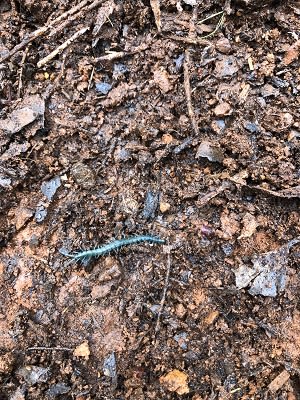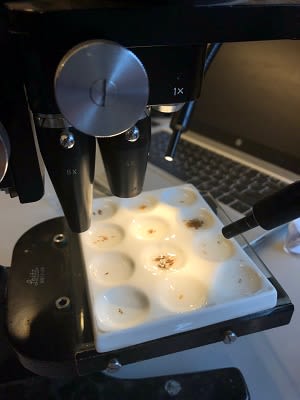Protected Areas of the ACT Bush Blitz | December 2018
I am fortunate enough to have spent the day working in stunning scenery with entomologists Juanita Rodriguez and Youning Su and ANU reptile specialists, Damien Esquerre and Jessica Fenker.

Wow! Already I am learning so much about collection techniques and completely blown away by the scientist’s knowledge of the creatures they study. I am coming to a rapid conclusion that entomology is a very, very cool science and that arthropods are ridiculously amazing.
We headed into Namadgi NP, driving down into the heavily forested Lower Cotter Catchment. Setting more malaise traps, searching for millipedes, sweep netting for grasshoppers and taking in a truly magical birdsong filled valley was the order of the morning. After turning up nothing but frogs, Jess and Damien left us to survey drier sites more conducive to lizards, leaving the entomologists and I to continue heading down to the designated survey site at Lees Creek. Juanita had me on millipede search by raking the leaf litter. How can millipedes live by the dozen in my dry house but apparently not in this lovely moist ideal habitat? I suspect it was more due to this trainee scientific researcher’s lack of skills than an ecological millipede disaster. I did however turn up trumps when it came to finding centipedes. They excited me, but not so my teacher.

On return to base, I spent time with Gary Taylor, an entomologist with the University of Adelaide, specialising in Lerps. I wanted to ask him about what I assumed was an insects home that appears at this time of the year on Birrigai’s Leptosperum. I asked the right person. Turns out they are the cases Lerp insects (Psyllids) build to protect their eggs and under a microscope, they look remarkably like mini igloos. And this is why I’m loving Bush Blitz! How special is it to be able to learn straight from scientists at the forefront of their fields?! Gary was busy classifying a range of psyllids he had collected by sweep netting vegetation and was quietly confident he had 2 species not seen in the ACT before. And that is why these scientists love Bush Blitz!